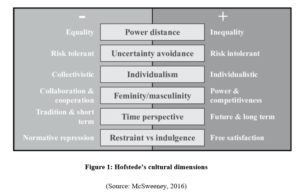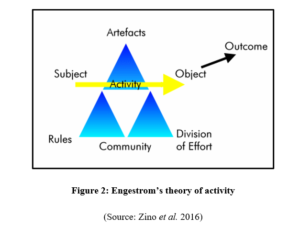MAR013-1 Case Study Assignment Sample
Here’s the best sample of MAR013-1 Case Study Assignment, written by the expert.
Introduction
The present assignment is going to discuss the intercultural practices and their relevant theories as per the case study. Intercultural awareness is an imperative aspect of working with people from other parts of the world. The mistakes made in this case study will be identified and described to find a proper solution to the intercultural problems. The case study of George and his mistakes while interacting with Japanese mechanics is going to be discussed to understand the cultural differences.
Mistakes made by George
George needed to provide training to a Japanese group containing 10 mechanics. However, after a certain time, George got annoyed that he cannot give training to them as they were taking George’s personal time. In this scenario, there were some highlighting mistakes made by George and these are given below:
- Patience is the key to handling uncomfortable situations and George could not keep it. He got annoyed by the behaviour of the mechanics which he should not. This is a severe mistake as handling demands of the client is the duty of a businessman.
- He did not understand that there are more cultures other than his own. He did not try to understand the culture of Japanese as understanding their culture would make the scenario different.
- George did not resolve the disagreement with the workers. At the time when several workers asked him to resolve the issues between them, he rejected the proposal. He should handle that situation in a more polite manner.
- George did not communicate with the mechanics properly and thus he could not see the point of view of the workers. He should face the cross-cultural communication challenge in a better way by preparing himself more. Thus, less awareness of the Japanese culture is one of the major mistakes made by George.
Understanding of Cross-cultural problems
In order to understand cross-cultural problems, two models have been taken: Hofstede’s model and Trompenaars model of culture. In this case study, George needs to realize his mistake and to understand his mistake he needs to know the issues related to dealing with people from different cultures (McSweeney, 2016). The achievement vs. ascription dimension of Trompenaars model and power distance index of Hofstede model indicates the same aspect. As per this index, the power is equally distributed if the score is low and unequal distribution happens in case the score is high. As mentioned in the study by Maduagwu and Igwe (2018), in Japan the score is high compared to UK and thus George needs to understand that people in Japan believe in having high power. This could be reason that they are constantly asking questions to George. Hofstede power index gives society point of view on power distribution however, in Trompenaars model it is about the status of the society (Lewandowska-Tomaszczyk, 2019). Therefore the mixture of these two models is going to help George mitigating the issues.
One of the major differences between culture of the UK and Japan is the lifestyle of the people. George needs to understand this major cultural difference to understand his mistakes. The uncertainty index of Hofstede model and universalism vs. particularism of Trompenaars model states almost a similar aspect. As discussed in the study by Cheng et al. (2019), high score in these aspects indicates that people love to be in the strict rules and lead their life maintaining these rules. Low score indicates that people enjoy leading their life in a more relaxed way and give enough personal time to enjoy their life. As depicted in the study by Kusumaningputri and Widodo (2018), this creates a major issue for George as the UK scores much lower than Japan.
George wants to spend his personal life as it is the culture of the UK. However, the culture of Japan is to guide life with strict rules and regulations. As stated in the study by PM Ribeiro (2016), they came to the UK for training and learning purposes and as per their culture the mechanics want to utilize this full time for learning. Understanding this perspective, George can know the mistakes made by him.
In both of the models of Hofstede and Trompenaars, individualism and collectivism index is the same. High score describes that individuals want to do tasks individually and low score describes people who want to make a community or group achieve a task. It has been found that people in the UK like to spend their time individually and want to give themselves first priority. The culture in Japan is completely different as people in Japan believe in social growth and concentrate on relationships (Baker, 2016). In this case study, the same thing happened. George wants to give himself time for enjoyment which indicates a clear sign of individualism. This culture of George makes him annoying as with the Japanese people individualism characteristics of George are suppressing. Japanese people want to learn as a group and they are trying harder to achieve it and this disagreement occurs between George and Japanese mechanics.
The model of Hofstede and Trompenaars indicates almost the same thing however, in the model of Trompenaars personal status and attributes are highlighted which is going to help George analysing his mistakes. As mentioned in the study by Buchanan et al. (2019), Hofstede highlighted more aspects that are not mentioned in the Trompenaars model which gives a better orientation of the society. George needs to understand the cultural differences of different countries to deal with foreign clients.

Intercultural theories for support of discussion
Engestrom’s theory of activity
Theory of activity helps to understand the mental condition of an individual and the different perspective of thinking. This theory describes three levels of activity
- It sets goals or the objective of the activity for the community.
- This level sets the action that needed to be executed by individuals or groups to achieve the activity (Zino et al. 2016). George needs to learn the intercultural awareness and it should be the objective.
III. It describes the action and is aligned with the objective to justify the action to achieve the goal. George can study the culture of different countries to improve his knowledge.
This theory describes the objective of activity and involves individuals with a single objective. It adds rules and regulation as well as motivations for the individual to achieve the goals. George needed to understand these theories and should set a goal to strengthen his cross-cultural awareness. He needed to understand the importance of having cross-cultural awareness and the way to achieve it.

Scudder’s theory of communication
Theory of communication states that to establish a relationship with another person it is imperative that they communicate with each other and share their point of view to understand the opposite person. As mentioned in the study by David (2017), listening is a significant tool for achieving good and transparent communication. Psychological point of view suggests that it should be a good interaction of emotions and feeling to establish good communication and George need to share the filling and his perspective with others. Social perspective states that the content of the discussion between the sender and the receiver should be strong enough that it can pass information towards the opposite person (Zhao, 2019) and thus George can spend more time communicating with other personalities.
This theory can be linked with the intercultural awareness perspective as it becomes more important to communicate with each other when a cultural difference is visible between two individuals. As discussed by Fuchs (2019), proper communication can help them to understand the cultural difference between them. In this case, the communication between George and the Japanese team is not good to understand each other. Thus, both of the sides stick with their own culture which creates issues between them.
Advice to George
George is advised to learn intercultural communication techniques and should follow the steps. These steps include understanding the existence of other cultures, understanding the point of view of other cultures and considering the positive sides of other cultures. In this way, his capability to understand different cultures can be increased. Besides, he is advised to increase his patience level and act as a trainer and guide. In case he has more patience and clearly states that he cannot be available after the working time it is possible that the mechanics understood the position.
Besides, he wasted the opportunity to resolve the issues which he should not have done. He is advised to utilize chances to clear misunderstandings or disagreements. These opportunities came from the mechanic’s side however, in future instances he should be the one that needs to realize his mistakes. He should learn the way of resolving intercultural issues. It is highly advised that he prepare more regarding the cultures of other communities which can help in dealing with foreign clients.
Conclusion
Based on the above discussion, it can be concluded that having intercultural awareness is imperative to establish proper communication with people from different cultures. In this case, George made mistakes such as losing patience, communicating in a bad manner, unwillingness to resolve the disagreement and many others. In this discussion, cultural differences such as the lifestyle of people, power distribution among people and many others have been found between the UK and Japan. Furthermore, George is advised to improve his communication skills and intercultural awareness to mitigate intercultural problems.
References
Baker, W., 2016. English as an academic lingua franca and intercultural awareness: Student mobility in the transcultural university. Language and intercultural Communication, 16(3), pp.437-451.
Buchanan, M.C., Correia, M.G. and Bleicher, R.E., 2019. Increasing preservice teachers’ intercultural awareness through service-learning. Educating Teachers and Tomorrow’s Students through Service-Learning Pedagogy, p.269.
Cheng, M., Adekola, O.A., Barnes, G.P. and Tian, L., 2019. The Perceived Impact of Intercultural Awareness on Peer Interaction: Study of a UK University. In The Three Cs of Higher Education (pp. 169-184). CEU Press.
David, M.K., 2017. the teaching of communicative strategies and intercultural awareness-core components for effective communication. The English Teacher, p.7.
Kusumaningputri, R. and Widodo, H.P., 2018. Promoting Indonesian university students’ critical intercultural awareness in tertiary EAL classrooms: The use of digital photograph-mediated intercultural tasks. System, 72, pp.49-61.
Lewandowska-Tomaszczyk, B., 2019, September. Parametrization of tertium comparationis in Cognitive Linguistic contrastive analysis: Polish and English hate. In BOOK OF ABSTRACTS (p. 68).
Maduagwu, C. and Igwe, R.F.D.A., 2018. Business Cultures of UK and Nigeria: Comparative Analysis using Geert Hofstede, Fons Trompenaars and Charles Hampden-Turner Theories. Business Cultures of UK and Nigeria: Comparative Analysis using Geert Hofstede, Fons Trompenaars and Charles Hampden-Turner Theories, 16(1), pp.18-pages.
McSweeney, B., 2016. Hall, Hofstede, Huntington, Trompenaars, GLOBE: Common Foundations, Common Flaws. In Transculturalism and Business in the BRIC States (pp. 39-84). Routledge.
PM Ribeiro, S., 2016. Developing intercultural awareness using digital storytelling. Language and Intercultural Communication, 16(1), pp.69-82.
Zhao, H., 2019. The Cultivation of Intercultural Communication Awareness in English Teaching under the View of the Core Competence of English Subject. Academic Journal of Humanities & Social Sciences, 2(5).
Zino, L., Rizzo, A. and Porfiri, M., 2016. Continuous-time discrete-distribution theory for activity-driven networks. Physical review letters, 117(22), p.228302.
________________________________________________________________________________
Know more about UniqueSubmission’s other writing services:

